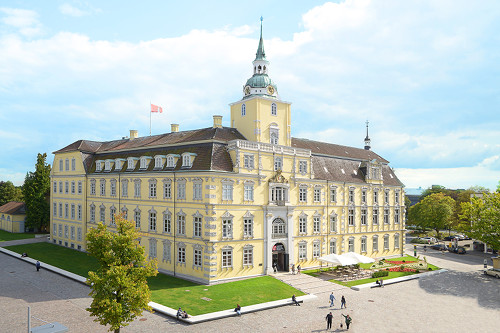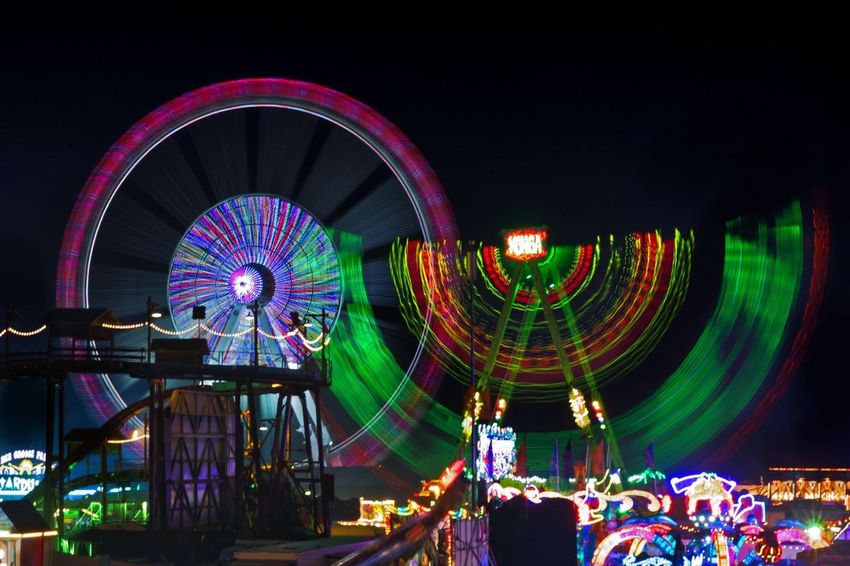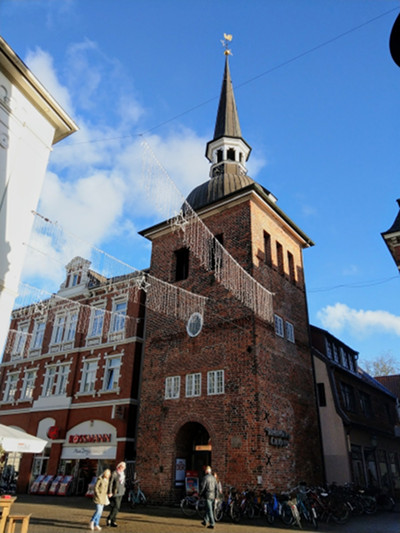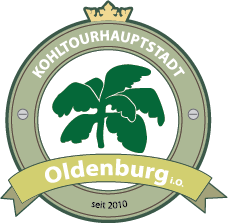About Oldenburg
Oldenburg is home to 160000 people and the economic hub of the Bremen - Oldenburg metropolitan region. It is a university city, and it was the German City of Science in 2009. A former princely residence, it looks back over a history spanning 1200 years. Oldenburg celebrated its 900th anniversary in 2008. For more than 800 years through to the 20th century it was home to counts, dukes and grand dukes. Numerous buildings such as the Palace, the Prince's Palace and the Elisabeth Anne Palace remind us of this splendid age. Oldenburg became a city when tens of thousands of refugees flocked to the area after World War II.
Oldenburg horses are leaders in upper level, international sport. By combining very different breeds with Oldenburg mare lines, Oldenburg breeders were able to breed horses that are now among the best modern sport horses in the world. Names recognized everywhere in the horse world are testimony, for example the Oldenburg breeding stallion *Donnerhall*, a two-time team World Champion. The success of these horses with the „O and crown“ brand lies in the combination of willingness and ability to perform, rideability, modern types that please the eye, plus a liberal breeding policy. The origin of this successful breed lies in the passion for horses that the state ruler, Count Anton Günther of Oldenburg (1603-1667), had during his reign. He was a renowned horseman and very active in breeding.
Interactive city map: http://gis4oldenburg.oldenburg.de/

|
| Source: www.landesmuseum-ol.de |
Schloss, Augustineum & Prinzenpalais:
State Museum(s) for Art and Cultural History
Schlossplatz 1 / Elisabethstraße 1 / Damm 1 www.stadtmuseum-oldenburg.de
The State Museum for Art and Cultural History in Oldenburg was established after the abdication of the last grand duke of Oldenburg in 1919. The early collection was made up of the former grand duke's picture gallery, the collection of antiquities, the inventories of the Museum of Decorative Arts and the former National Picture Gallery. Today the collection is placed in three locations. In the Oldenburg Palace there are the historic rooms, the show of decorative arts, regional history and a few Old Master paintings. The permanent exhibition in the Augusteum presents the larger part of the Old Masters collection, while the Prinzenpalais is home for the New Master paintings of the 19th and 20th centuries. The highlights of the whole collection are the Old Master Picture Gallery, particularly the Italian and Dutch paintings of the 15th to the 18th century, the collection of Johann Heinrich Wilhelm Tischbein, who had the main-part of the palace's classical interior, the collection of decorative arts with exceptional exhibits of the middle-ages and the renaissance era as well as an excellent selection of the Classic Modernism. The focal points of that collection are the Worpsweder Künstlerkolonie (Fritz Mackensen, Heinrich Vogeler, Fritz Overbeck, Otto Modersohn, Paula Modersohn-Becker), paintings by the German Impressionists Corinth, Liebermann and Slevogt as well as the important collection of the Brücke-Expressionism.

|
| Source: www.oldenburg.de |
Oldenburger Kramermarkt
Weser-Ems-Hallen www.oldenburg.de
If you need some diversion to the physical program you can find this at the 411th Kramermarkt in Oldenburg. The Kramermarkt
is a big fair with over 250 shops, for example a lot of fairground rides and diverse food offers.
The so-called fifth season starts on Friday, September 28th , that’s at the same time as the German conference of
women in physics!
At the first day of this event, on September 28th, the first of three fireworks is ignited. The last one gets ignited
at the end of the Kramermarkt, on October 7th.
On Saturday there is a big pageant where some clubs present their colorfully decorated parade floats and hand out sweets
to the spectators, especially to the kids. It starts at 13:45h at the Staatstheater in Oldenburg.
Of course the admission to the event area is free and everybody should be able to find some attraction she likes!

|
| Source: www.oldenburg-tourismus.de |
Lappan
Lange Straße 3The Lappan from 1467/68 is considered Oldenburg’s main landmark. Formerly the bell tower of the Heilig-Geist Chapel, it is a popular meeting point in the city center today. Opposite the Lappan the conference dinner will take place.

|
| Source: www.kohltourhauptstadt.de |
Kale Capital
Oldenburg is known as Germany’s kale capital. The honorable title was received in 2010, but the tradition of proclaiming the kale king and his kale queen, going on kale tours, and eating tons of this winter green is much older. Recent years saw an incredible increase in kale PR, leading to the establishment of the „Kale Academy Oldenburg”, a not-so-serious-but-well-respected institution whose sole purpose is to inform, educate, and entertain; anything kale-related. www.kohltourhauptstadt.de. Traditionally, German kale (Grünkohl) is prepared as a hearty stew with Pinkel – a spiced pork sausage mainly consisting of bacon, groats of oats or barley, beef suet, and lard. Especially after becoming official kale capital this winter cabbage is now offered in a multitude of new variants – from kale stir-fry to kale smoothies.
Horst-Janssen-Museum
Am Stadtmuseum 4-8 (bus stop Lappan) www.horst-janssen-museum.deThis art museum shows the biography of Horst Hanssen and his work in well assembled groups: drawings and water colors, cycles of etchings, wood carvings, lithographies, posters, and illustrations. Landscape, erotic, portraits, still life and ever again the self-portrait characterize his extensive work.
More tourist destinations and information about restaurants, bars, etc.: https://www.oldenburg-tourismus.de/